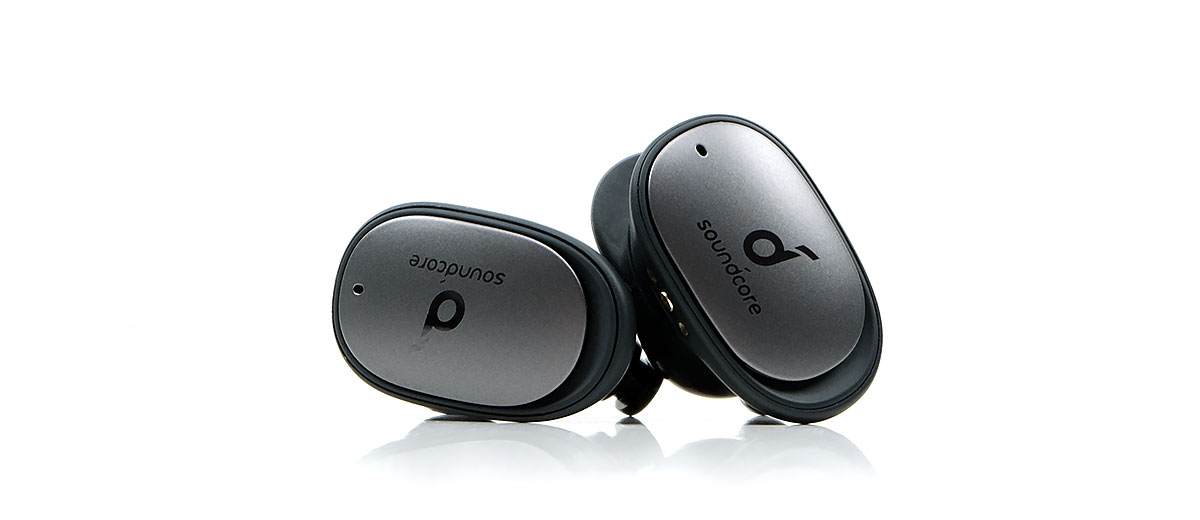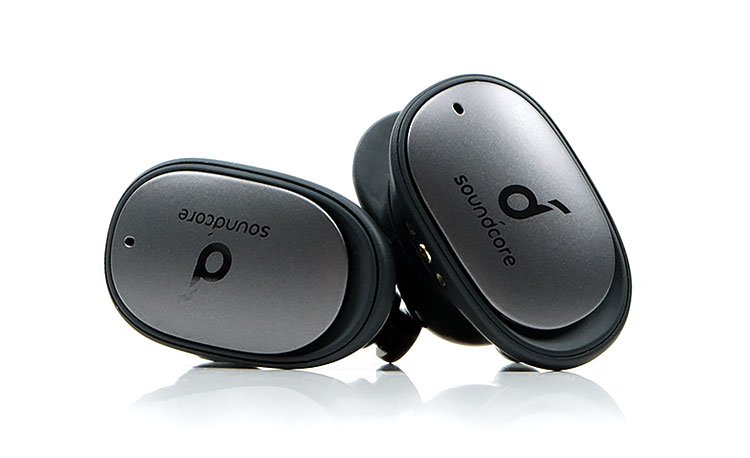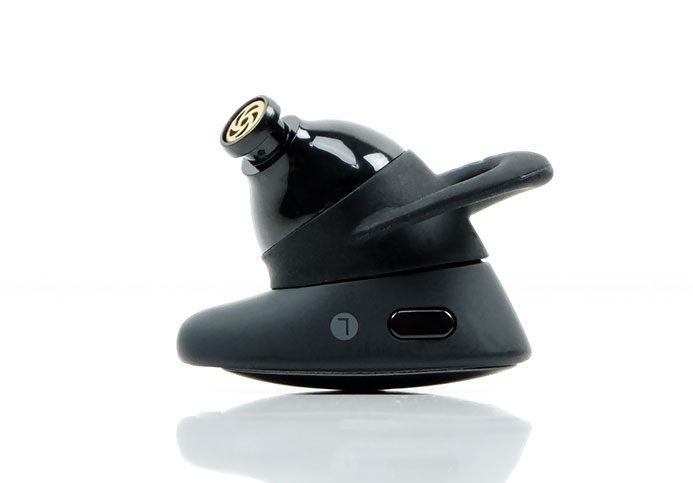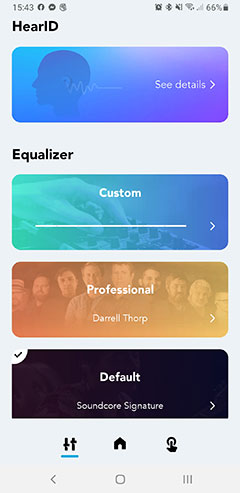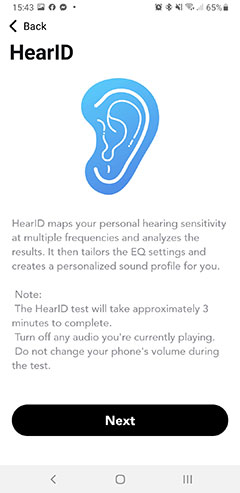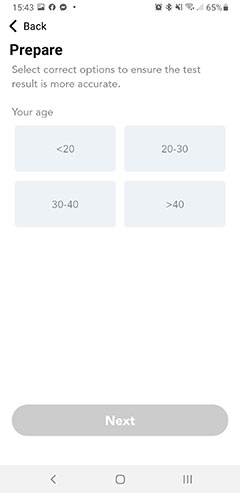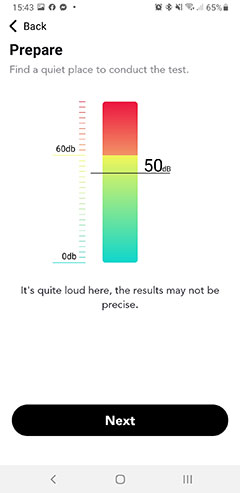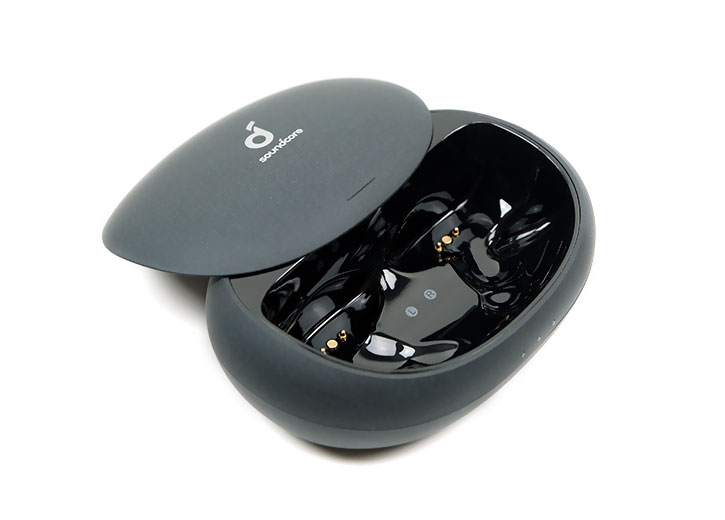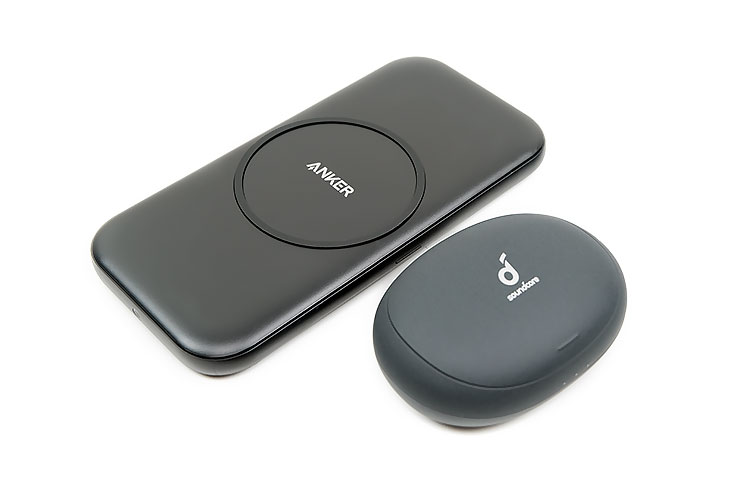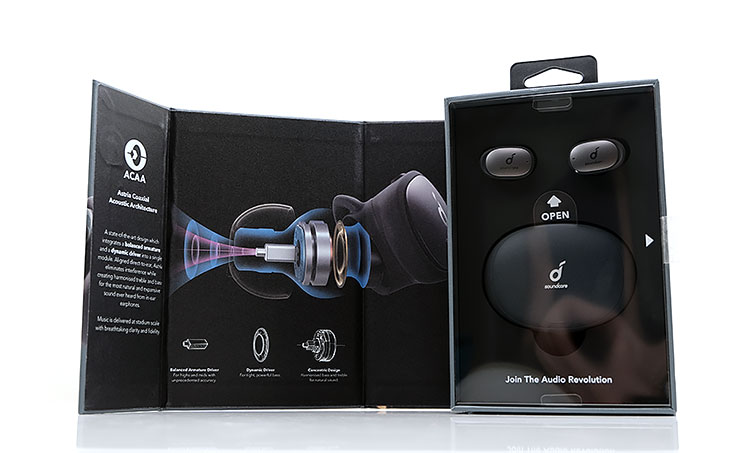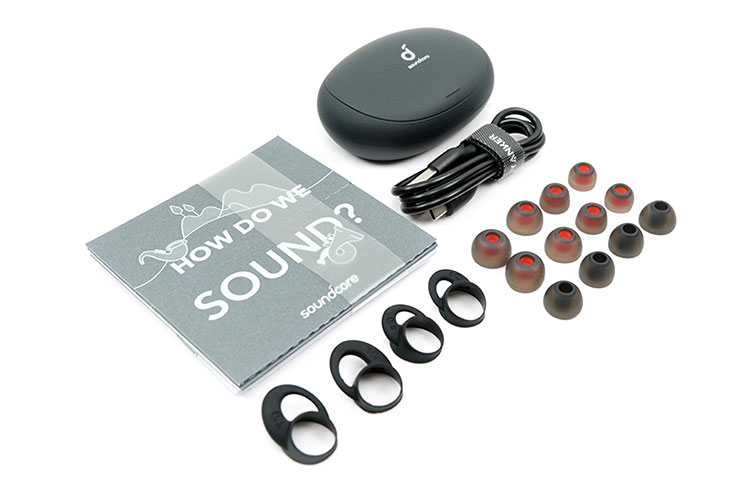The Anker Soundcore Liberty 2 Pro is a new hybrid single dynamic and single BA driver TWS with up to 32 hours of playtime and aptX. It is priced at $149.99.
Disclaimer: The Anker Soundcore Liberty 2 Pro sent to us is a sample in exchange for our honest opinion in this review. We thank Anker for this opportunity.
To learn more about TWS reviews on Headfonics you can click here.
Note, this review follows our new scoring guidelines for 2020 which you can read up on here.
A chance conversation with Knowles management led to the Anker Soundcore Liberty 2 dropping on my desk a few weeks later. They speak highly of it and Anker is a high-profile gadget brand with a good rep on the local level so definitely worthy of a review.
The Soundcore Liberty 2 Pro is priced at $149.99 which places it a little above average in the context of a few other TWS offerings but it does seem to come packed with plenty of features. Standouts such as an in-depth app, admirable battery performance, and a dual driver configuration do warrant consideration.
As an FYI, they do have a cheaper option, the single dynamic driver Liberty Air 2 priced at $99.99 and we will be reviewing that one also very shortly.
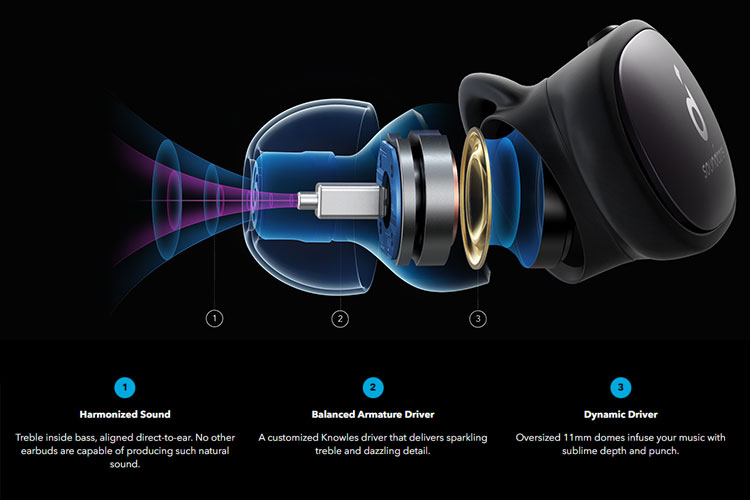
Tech Inside
Configuration
The Liberty 2 Pro is one of the few TWS that has a multi-driver configuration which is always a point of major interest from our perspective. Inside you get a single 11mm dynamic driver and a single Knowles custom-tuned balanced armature.
Soundcore are calling it Astria Coaxial Acoustic Architecture but the details of what exactly it is are a little on the vague side from the collateral on their website. The description of treble inside the bass lines direct to ear is more for impact than engineering drive.
The crossover sits around 3k, will be fairly high up with the BA covering the upper-mids to the highs and the dynamic driver going up to the mids. Certainly, the two most prominent aspects of the sound are the bass and upper-mids/treble so there is plenty of contrast in the sound.
Bluetooth 5.0/aptX
Good to see the benchmarks are covered for a $149.99 TWS, anything less would have been a missed opportunity. BT5.0 is an absolute minimum for any TWS in 2020 and aptX is the highest level of decoding you can probably have right now for True Wireless due to the battery and tech restrictions.
You can get away with SBC and AAC only if you have a killer SoC and driver like the Sony WF-1000XM3 but those are more often the exception than the norm. I am expecting a reasonable performance for latency from the Liberty 2 Pro also and you can read more about how it did on page 2 for this review.
cVc 8.0
The Liberty 2 Pro uses a quad mic system combined with cVc 8.0 for noise suppression during calls. cVc technology is a set of noise reduction algorithms built into the microphone audio processing circuit of the Liberty 2 Pro.
It is primarily designed to improve the quality or clarity of voice calls and lower interference from wind or outside noise. This tech should not be confused with ANC which is much more aggressive in noise cancellation.
Soundcore App
Anker has made a big deal out of this and to be honest, I agree. You can read in more detail further down the page about what exactly it does but the key focus is their HearID feature which is a bit like beyerdynamic’s MIY app in the way it generates a listening profile based on your hearing capability.
More than that it has oodles of customizable profiles including presets done from a wide range of Grammy Award Winning producers such as Alex Pasco and Zach Allen which do make a difference to the tuning of the Liberty 2 pro.
Wireless Charging
I am not surprised with this feature as Anker have their own suite of Qi-Certified, wireless charging pads. We actually have one here, the PowerWave Base Pad which works perfectly and much simpler for charging than going wired.
It actually also works beyond the Liberty 2 Pro for compatible devices such as smartphones so the likes of my Note 9 from Samsung fits perfectly on the pad for charging.
Design
The Liberty 2 Pro design is a cross between that elongated Sony TWS faceplate and the 1MORE bulbous shell and ear wing form factor. So, it is reasonably big and quite tall with a Sony/1MORE style of insertion that places the majority of the shell outside your ear.
That does make it easy to access the physical controls without excessive movement but with a short nozzle, tip suitability has added emphasis.
The toning is black with a gunmetal dark grey branded faceplate with two bass venting ports, one on each faceplate, for the dynamic driver to breathe. The materials are a dense and smoothly finished plastic, interrupted by those detachable rubber ear wings which come in various sizes to fit your ear.
Overall, the Liberty 2 Pro feels solid and built to a good standard for the price point. Its IPX 4 rating will also give it some additional flexibility for gym use and moisture resistance.
Comfort & Isolation
Ear Wings
The inclusion of stabilizing ear wings that slips right onto the nozzle housing does help a lot with keeping the large Liberty 2 securely in place.
The ear wing initially looks like it is part of the driver itself but in actual fact, it is a slip-on rubber ring that is shaped to mimic the contour of the Liberty 2 body. That keeps it low-profile and prevents it from creating fitting and stability issues.
The ear wings also come in several sizes so if the one on the Liberty 2 Pro out of the box is too small or big you can slide off the tip, then the ear wing and change it for one that suits you better. They are also left and right specific for a small hook at the back of the main housing to fit so make sure you get them on correctly.
Tips
You get two types of single bore silicone tips with the Liberty 2 Pro. A pure black slightly soft version in large and medium and a stiffer red stem option in 4 in large, medium, small and extra small.
Neither really isolated that well against the might of my window aircon though the bass port venting of the Liberty 2 Pro will mean slightly less passive noise canceling. I tried some additional 3rd party tips such as SpinFit, Symbio W, and Final E, and whilst I preferred the Final E for stability, none had a distinct advantage over the stock tips for isolation.
I did get a minor advantage with foams but otherwise, I will put that down to the bass venting being the common denominator for the lower isolation level.
Of the supplied tips I had a preference for the softer black tips which seem to carry a little more definition whereas the red stem tips enhanced bass depth and add some additional mid-bass bloom.
Final E tips fattened up the low-end a bit more and actually refined the treble for me which I wasn’t expecting. Symbio W introduced a little more warmth than the Final E but also helped deliver a bit more body to the treble compared to the stock tips.
I would be happy with either actually combined with one of the EQ profiles on offer from the app such as James Cassidy Turbin’s softer treble tuning or Krish Sharma’s more explosive levels of gain.
Controls
You can control the Liberty 2 Pro through a mix of physical and apps-based functions. The physical controls are on the top side of each driver and are user tweakable via their Soundcore main app. The way the main driver housing sits outside of your ear also means there is plenty of space to access the buttons.
Whilst the physical controls are pretty much standard fare with playback, volume, call, and Google Assistant/Sire functionality, it is really the Soundcore app that is the star of the show.
Outside of the Sony Headphones Connect app, the Soundcore app is probably one of the most feature-rich TWS software systems I have used to date. Its specialty is two-fold, the HearID personal EQ system and up to 22 calibrated EQ profiles from pros, custom, and default.
Preset EQ
This is one of the most complex EQ presets line-up I have tried to date for a TWS and I do have some favorites. From the default or standard EQ sets, the Electronics and Dance get my vote because well that’s what I tend to enjoy the most and sound the most balanced.
Profiles such as acoustic seem to enhance the mids and upper mids a bit more whereas the bass reducer lowers the overall gain and low-end bloom. The flat EQ was just that and probably the most ‘reference’ of the presets and good for those who want a little less of everything.
The booster options for treble and vocal as well as ‘deep’ and ‘small speaker’ options felt unbalanced to my ear. There was perhaps too much emphasis in either the upper mids or attenuation in the opposite direction casting a veil over the mids tuning with a lack of air.
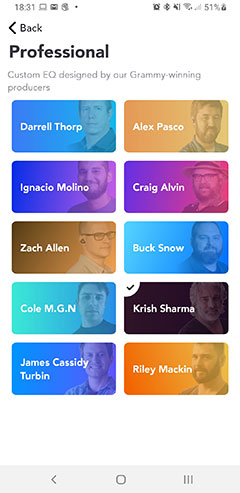
Pro EQ
The BA in the Liberty 2 Pro is on the brighter side in the stock mode so pushing it harder tends to give it a strident quality with the regular treble boost options. The Pro EQ is a better fit if you want something a bit less dramatic or subtler in their tuning nudges. The options here are excellent.
If you are a little sensitive to treble but still want something fairly balanced then the James Cassidy Turbin preset is perfect. It produces a much more rounded tone and a slightly liquid treble tuning that is pretty easy on the ear.
The Zach Allen tuning comes a close second for taming the highest. You get a bit more sub-bass emphasis and the treble is not as laid back but it is still quite smooth to my ear. The same also with the Calvin Alvin tuning but with slightly less bass boosting.
If you want a bit more gain, and more bass/treble contrast then the Alex Pasco mix is a solid choice as is the Krish Sharma setting. IN fact, the Krish Sharma is probably the most fun mix of the lot with its enhanced gain and vivid levels of contrast.
HearID
What HearID does is through a process of user interaction it measures your listening capability to a set of tones in the left and right ear to produce a personal profile suited to your listening capability.
The steps include your age also to account for the usual diminution in hearing ability as you get older. The final check is an environmental noise adjuster and you do need to be in a quiet spot for sensitivity levels to be optimal.

This is an interesting feature though I am not entirely convinced about my resulting personal profile in terms of enjoyment. I suspect I would have to do it a few times to get it right though as I think I messed up the original process and got this huge 800Hz dip that kills the balance in the presentation.
The second attempt showed more of a bias to the upper mids in one ear and that lower-mids dip in the other. I am not sure how scientific that is in terms of accuracy because it does require you to hit a button when you cannot hear anything.
Cradle
The cradle is about medium-sized for a TWS but surprisingly shallow considering the size of the drivers. It is made of lightweight plastic and fairly pebble-shaped. Untouched it is smooth, well-made but not the most exciting of designs. However, once you start articulating that lid it becomes way cooler.
The lid is a slide up and down on a hinge and super easy to manage. It also has a slight bend to it meaning it curves around the case lines very smoothly. You can manage this with one hand and it is kind of addictive, like stress therapy of a squeeze ball.
The tray is magnet-based rather than drop-in because of the shallow depth of the case itself. You simply place the drivers on their side and they lock into place. No amount of jiggling will cause them to fall out if the lid is open so consider it fairly secure.
Battery life
Battery life above average for a non-ANC based unit at 8 hours per cycle for the drivers and up to 24 hours in the case giving you a total of 32 hours for both. Not quite best in class with the Lypertek TEVI’s excellent 10-hour cycle per driver and 70 hours in total including the case but still pretty competitive.
The total charge time is 1.5 hours from 0 to 100% but you do get a fairly nice quick-charge feature that will give you 2 hours play time for as little as 10 minutes. The wireless charge feature, QI-charging is excellent from the pad as tested and well worth the money for the convenience. Simply place the cradle on the base and the rest is automatic.
The charging indicator is a simple 3 LED light system on the front of the cradle that blinks whilst juicing up and you can also do a manual wired charge to the rear with a USB-C port.
Packaging & Accessories
The Liberty 2 Pro packaging is on the impressive side of things, well more so than a lot of other TWS solutions. It is a relatively large flip lid box, not too dissimilar to the 1MORE styling with a nice diagrammatic breakdown of the driver configuration on the inside of the lid.
The main box is two layers deep with the trade and drivers on the top and the accessories just below and all behind a plastic protective covering.
The accessory lineup is dominated really by the extensive ear wing and tips selection but you do also get an additional USB-C to USB-A charging cable and a user guide. I always suggest with TWS to read the guides unless you have access to the digital version.
Handily enough, Anker has been wise enough to provide digital versions of the paper manual which you can download from their website support section for the Liberty 2 Pro.
Click on page 2 below for sound impressions and comparisons

